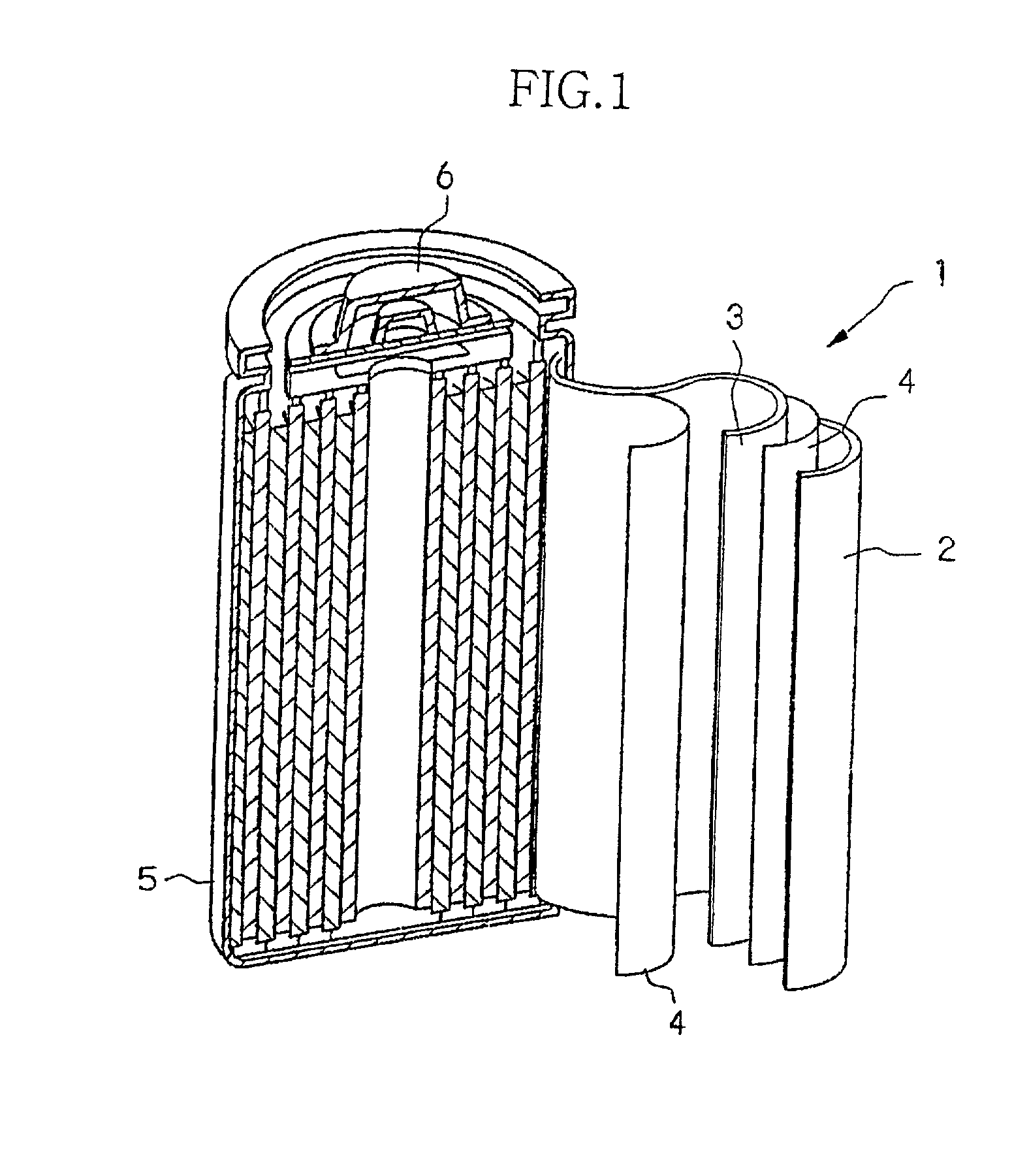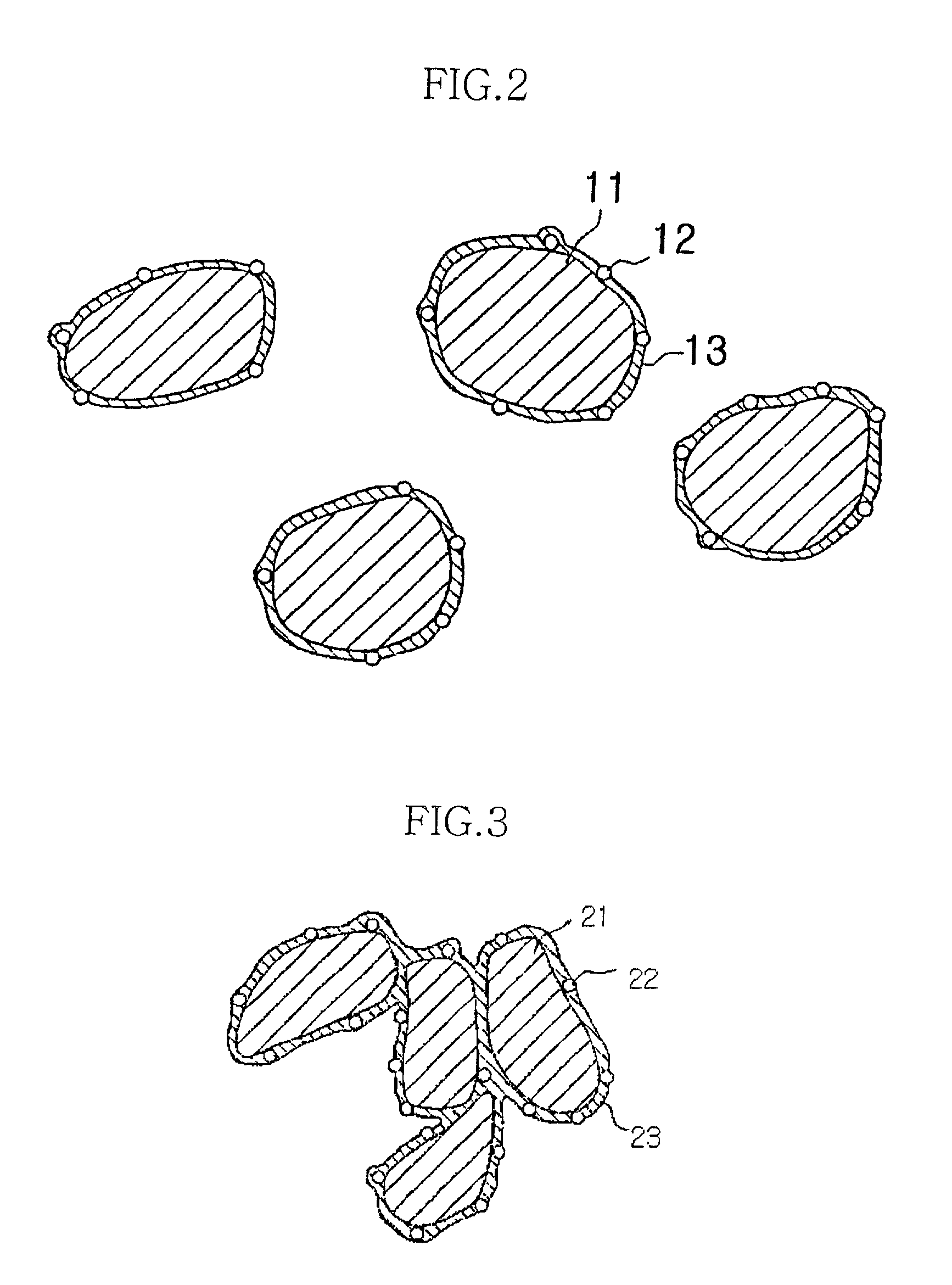Negative active material for rechargeable lithium battery and method of preparing same
a rechargeable lithium battery and negative active material technology, applied in the direction of cell components, sustainable manufacturing/processing, wound/folded electrode electrodes, etc., can solve the problems of low adhesion strength between silicon compound and graphite, unstable negative active material, and inability to use separated silicon compound as negative active material
- Summary
- Abstract
- Description
- Claims
- Application Information
AI Technical Summary
Problems solved by technology
Method used
Image
Examples
Embodiment Construction
[0077] The Preparation of the Negative Electrode
[0078] Natural graphite particles having the average particle size of 15 .mu.m were added to silicon micro-particles having the average particle size of 12 .mu.m, and then they were wet-mixed by adding ethanol to the mixture to prepare an ethanol solution.
[0079] Polyvinyl alcohol resin was added to the ethanol solution, and they were stirred to vaporize ethanol from the mixture of the ethanol solution and polyvinyl alcohol. As a result, a negative active material precursor attached with the silicon micro-particle and coated with a polyvinylalcohol film was obtained.
[0080] The precursorwas calcined at 1000.degree. C. (1273K) under the vacuum atmosphere. At this time, the polyvinyl alcohol film was carbonized to form a carbon film.
[0081] As the result, a negative active material with 5 wt % of silicon micro-particle and 2 wt % of the carbon film was produced.
[0082] Fabricating of test cell for charge and discharge Polyvinylidene fluoride...
PUM
 Login to View More
Login to View More Abstract
Description
Claims
Application Information
 Login to View More
Login to View More - R&D
- Intellectual Property
- Life Sciences
- Materials
- Tech Scout
- Unparalleled Data Quality
- Higher Quality Content
- 60% Fewer Hallucinations
Browse by: Latest US Patents, China's latest patents, Technical Efficacy Thesaurus, Application Domain, Technology Topic, Popular Technical Reports.
© 2025 PatSnap. All rights reserved.Legal|Privacy policy|Modern Slavery Act Transparency Statement|Sitemap|About US| Contact US: help@patsnap.com



